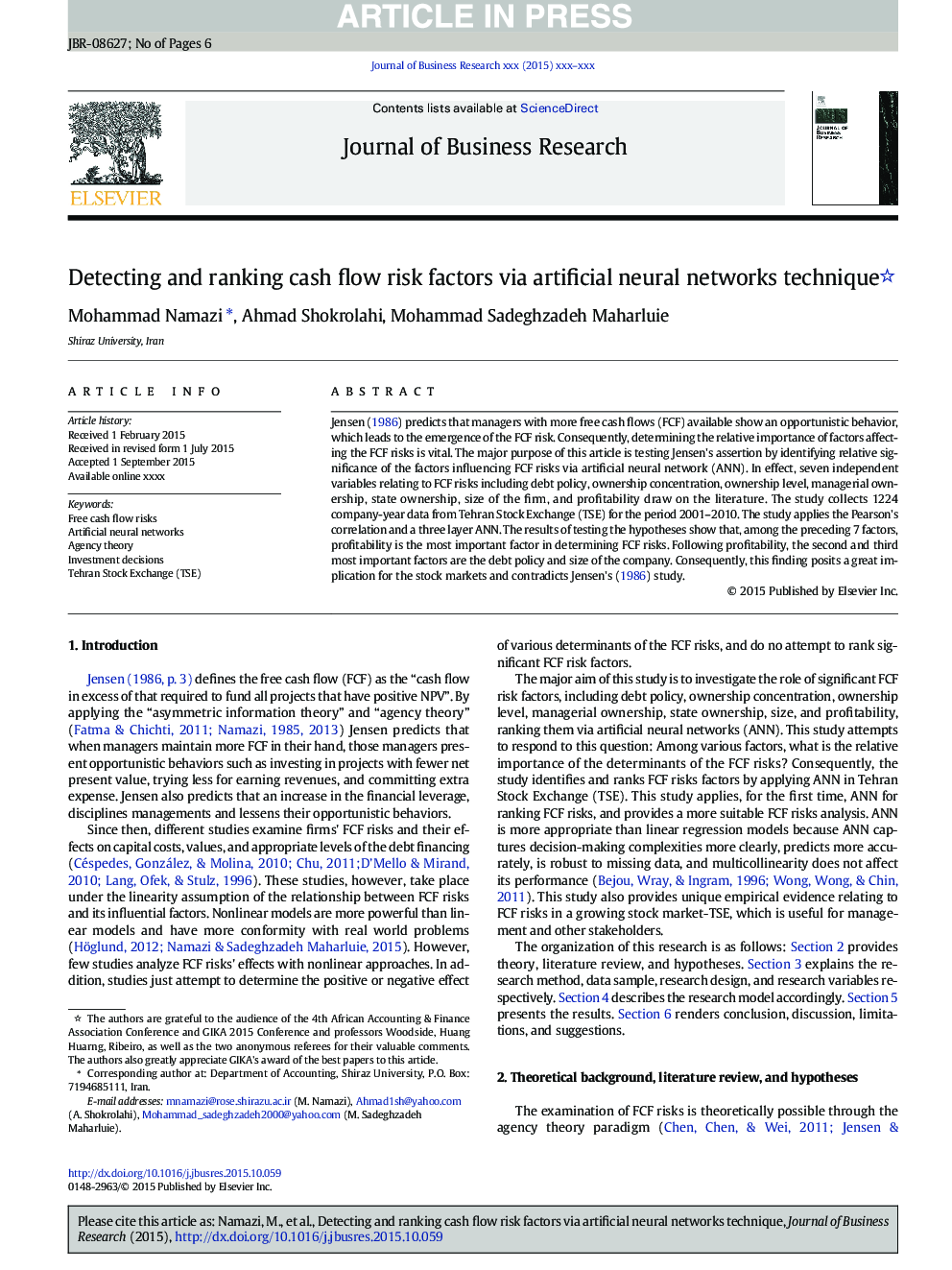| Article ID | Journal | Published Year | Pages | File Type |
|---|---|---|---|---|
| 10492782 | Journal of Business Research | 2016 | 6 Pages |
Abstract
Jensen (1986) predicts that managers with more free cash flows (FCF) available show an opportunistic behavior, which leads to the emergence of the FCF risk. Consequently, determining the relative importance of factors affecting the FCF risks is vital. The major purpose of this article is testing Jensen's assertion by identifying relative significance of the factors influencing FCF risks via artificial neural network (ANN). In effect, seven independent variables relating to FCF risks including debt policy, ownership concentration, ownership level, managerial ownership, state ownership, size of the firm, and profitability draw on the literature. The study collects 1224 company-year data from Tehran Stock Exchange (TSE) for the period 2001-2010. The study applies the Pearson's correlation and a three layer ANN. The results of testing the hypotheses show that, among the preceding 7 factors, profitability is the most important factor in determining FCF risks. Following profitability, the second and third most important factors are the debt policy and size of the company. Consequently, this finding posits a great implication for the stock markets and contradicts Jensen's (1986) study.
Related Topics
Social Sciences and Humanities
Business, Management and Accounting
Business and International Management
Authors
Mohammad Namazi, Ahmad Shokrolahi, Mohammad Sadeghzadeh Maharluie,
